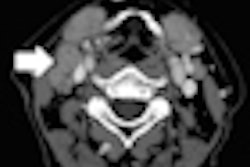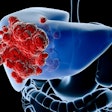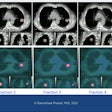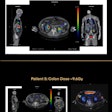Prostate brachytherapy for high-risk prostate cancer patients has historically been considered a less effective treatment, but a new study of almost 13,000 men published online January 23 in the International Journal of Radiation Oncology, Biology, Physics suggests otherwise.
Patients who received brachytherapy treatment alone or in combination with external-beam radiation therapy (EBRT) had significantly reduced mortality rates, according to a population-based analysis from radiation oncologists at Thomas Jefferson University Hospital's Kimmel Cancer Center.
A research team led by Dr. Xinglei Shen, a radiation oncology resident, analyzed data from the Surveillance, Epidemiology, and End Results (SEER) database of 12,745 men diagnosed with and treated for high-grade prostate cancer between 1988 and 2002. During this time, the database defined high-grade prostate cancer patients as individuals having a Gleason score of 8 to 10, or a Gleason grade of 4 to 5 if the score was not recorded (Int J Radiat Oncol Biol Phys, January 23, 2012).
The majority of patients (73.5%) received EBRT. The remainder received only prostate brachytherapy treatment (7.1%) or a combination of both treatments (19.4%). The use of brachytherapy, whether alone or in combination, increased dramatically during the study period, from 5.1% between 1988 and 1992 to 31.4% between 1998 and 2002, the authors reported.
In addition to the year of diagnosis, predictors of the use of brachytherapy included a younger patient age, an urban residence, lower T-stage, and non-Hispanic ethnicity, according to the researchers.
The patients were followed for a median time period of 6.5 years. Treatment with brachytherapy alone or in combination with EBRT was associated with a significant reduction in prostate cancer-specific mortality rates, compared with EBRT alone.
"The study contradicts traditional policies of using brachytherapy in just low- and intermediate-risk patients by suggesting there may, instead, be an improvement in prostate cancer survival for high-risk patients," suggested co-author Dr. Timothy Showalter, assistant professor of radiation oncology.
"Although studies like this cannot prove an advantage for brachytherapy, our report does suggest that brachytherapy is no less effective than EBRT and should be considered for some men with high-risk prostate cancer," he concluded.



















